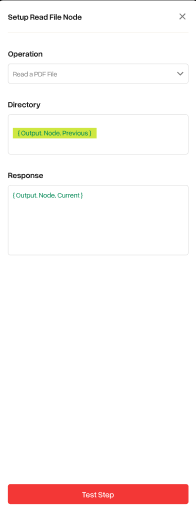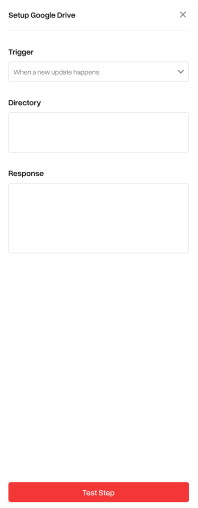Testing
Testing is a crucial aspect of ensuring the reliability and accuracy of GenAI applications built on the Lamatic.ai platform. Lamatic.ai provides two levels of testing to streamline the development and validation process.
Node-Level Testing
Node-level testing allows you to validate the functionality of individual nodes within your workflow. After configuring the required fields for a node, you can initiate a test by clicking the test step button. This feature enables you to verify the correctness of each step in your workflow, ensuring that the output meets your expectations before proceeding to the next node.


Node-level testing is particularly useful when you need to:
- Validate the input data and configurations for a specific node
- Troubleshoot issues within a single node
- Iteratively refine the behavior of a node before integrating it into the overall workflow
By testing individual nodes, you can identify and resolve potential issues early in the development process, saving time and effort in the long run.
Workflow-Level Testing
In addition to node-level testing, Lamatic.ai offers workflow-level testing, which allows you to validate the end-to-end behavior of your entire GenAI application. To initiate a workflow-level test, click the test button located in the top-right corner of the workflow editor.

Workflow-level testing is essential for:
- Verifying the integration and interaction between multiple nodes
- Ensuring the overall logic and flow of your application are correct
- Identifying any potential issues or conflicts that may arise from the combined execution of multiple nodes
- Validating the final output or result produced by your workflow
By testing the entire workflow, you can gain confidence in the functionality and reliability of your GenAI application before deploying it to a production environment.
Best Practices for Testing
To effectively leverage the testing capabilities of Lamatic.ai, consider the following best practices:
-
Test Early and Often: Incorporate testing into your development process from the beginning and conduct tests regularly as you make changes or add new functionality.
-
Use Realistic Test Data: Ensure that your test data accurately represents the scenarios and conditions your application will encounter in production.
-
Document Test Cases: Maintain a comprehensive set of test cases to cover various input scenarios, edge cases, and expected outcomes.
By following these best practices and leveraging the testing capabilities of Lamatic.ai, you can ensure the quality, reliability, and scalability of your GenAI applications, ultimately delivering a superior user experience.